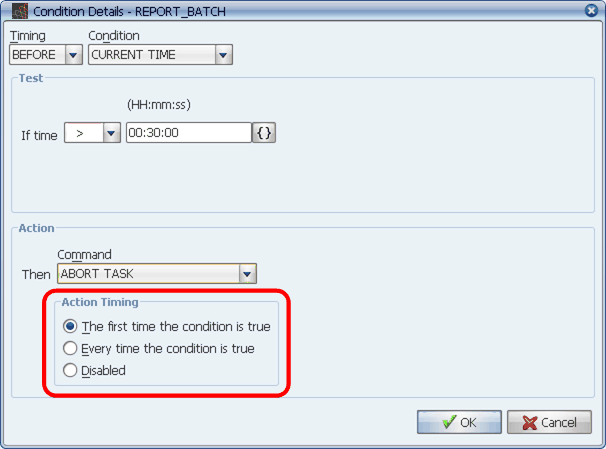
Select an action timing for a condition.
You determine if the action will be taken the first time the condition is true, every time the condition is true, or if the condition should be disabled.
Applications Manager evaluates conditions for a job at least every 59 seconds. However, you select how often the action for each condition should be taken by selecting a radio button from the Action Timing box as shown below. So, even though a condition may be evaluated multiple times, the action may be taken only the first time the condition is true.

Select an action timing for a condition.
The action timing radio buttons are described in the table below.
| Option | Description |
|---|---|
|
Applications Manager only initiates the specified action the first time the condition is true and changes its action timing to Disabled. After that, Applications Manager skips the condition. You might use this option for a condition that notifies an operator when a job has failed. If there are events that cause the condition to be evaluated as true a number of times, Applications Manager won't send out a new message every time. |
|
|
Applications Manager initiates the specified action every time the condition is true. This setting is used often with the DELAY TASK action. For example, you might use this option if you want job 'Y' to execute only after another job 'X' has completed. You could check for the status of job 'X', and if it has not completed, use the DELAY TASK action to delay job 'Y' by 15 minutes. You would want to use the delay each time the condition is true. |
|
|
Disabled |
Applications Manager will skip the condition. You might use this option if you write a condition, but do not want to activate it. The action timing for conditions with The first time the condition is true selected will change to Disabled when the action is taken. |